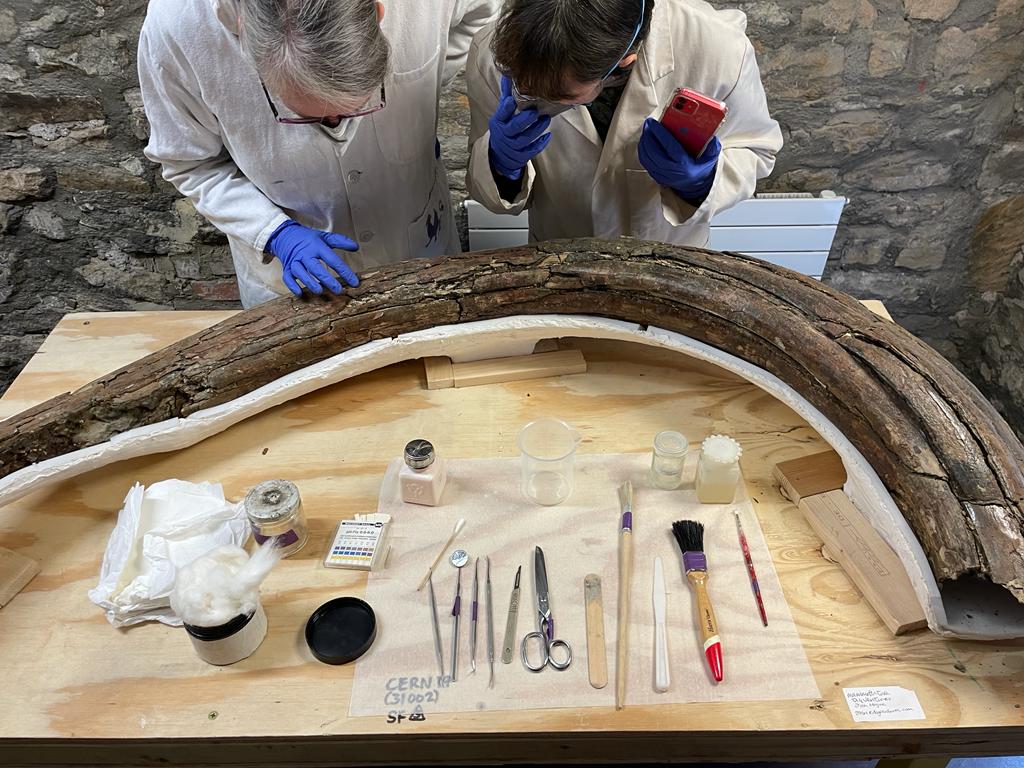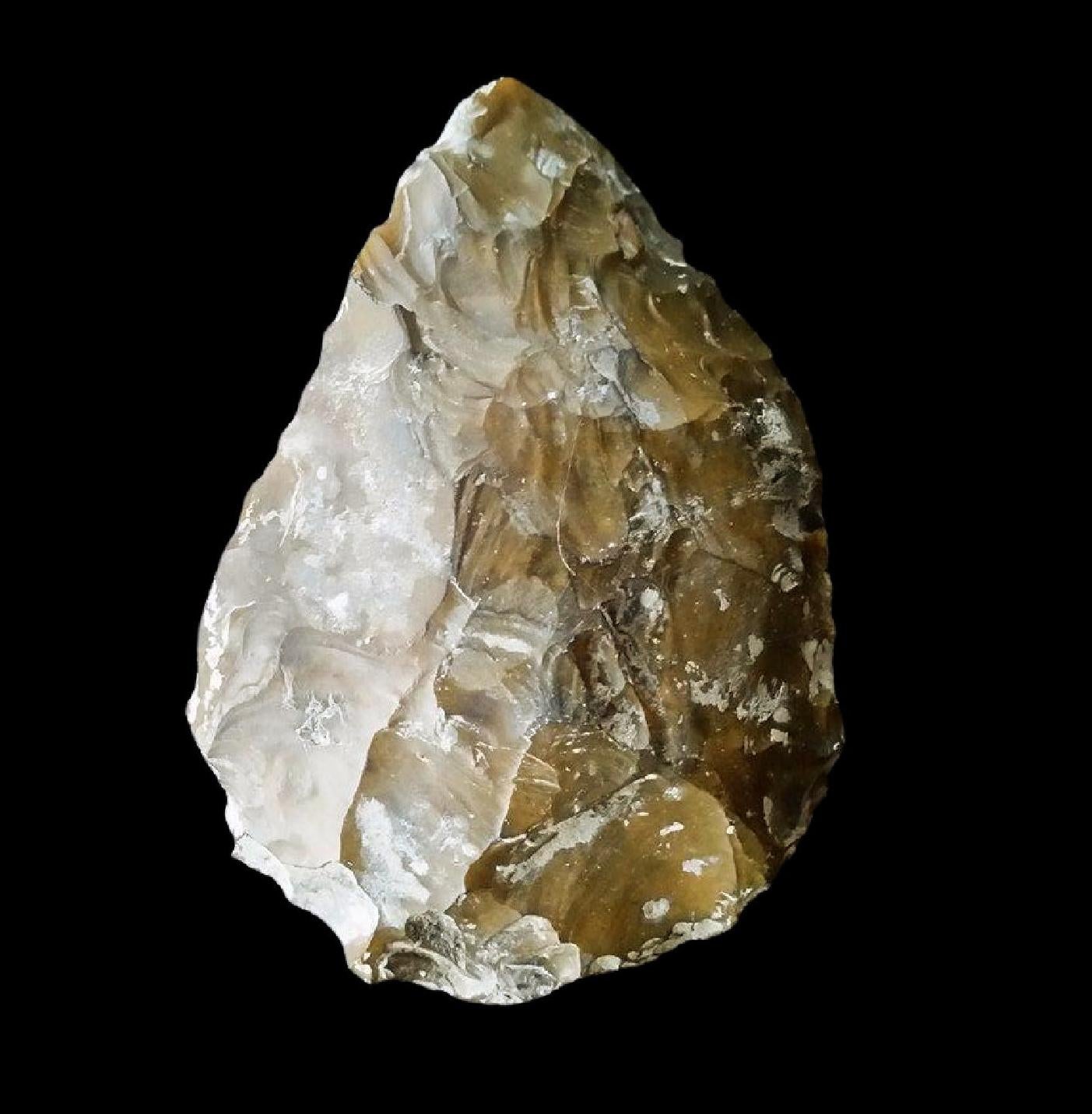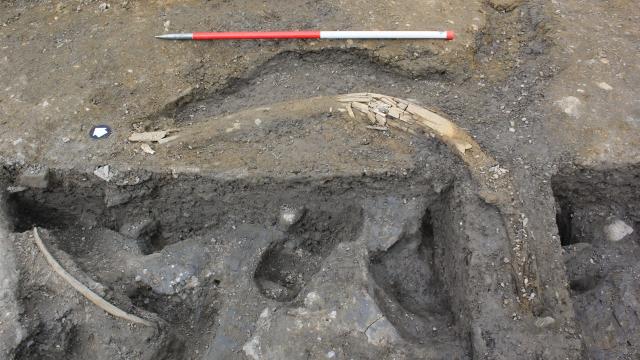Evidence of steppe mammoths, gigantic elk, brown bears, and other ice age animals have been pulled from an English quarry, in what experts are calling a significant discovery.
“Finding mammoth bones is always extraordinary, but finding ones that are so old and well preserved, and in such close proximity to Neanderthal stone tools is exceptional,” said Lisa Westcott Wilkins, co-founder of DigVentures, in a statement.
DigVentures was brought in after private fossil hunters Sally and Neville Hollingworth uncovered some mammoth fossils and a Neanderthal hand axe at a quarry near Swindon, UK. The duo was “originally hoping to find marine fossils, and finding something so significant instead has been a real thrill,” Sally Hollingworth said in the release.

DigVentures, self-described as a “platform that enables civic participation in archaeology and heritage projects,” made the ensuing excavations possible, collecting £100,000 ($US132,000 ($185,684)) in funding from the heritage organisation Historic England. DigVentures used lidar, aerial 3D photogrammetry, borehole drilling, and other techniques to build maps of the site, both above and below ground. Sediments located near the bones were used to perform optically stimulated luminescence (OSL) dating.
The digs, one in 2019 and a second in 2021, resulted in the discovery of five steppe mammoth skeletons, which Westcott described as being in “near-pristine condition,” she told the Guardian. The five steppe mammoths consisted of two adults, two juveniles, and one infant, and all date to between 210,000 and 220,000 years ago — a period characterised by increasingly cooler temperatures. The fossils, including tusks, leg bones, teeth, ribs, and vertebrate, were found 16 feet (5 meters) below ground level and very close to a busy road.

Interestingly, these specimens were small, at least as steppe mammoths go. “We think that was an adaptation to the change in environment, climate and resource availability,” Ben Garrod, an evolutionary biologist at the University of East Anglia, told the Guardian. “It was becoming colder at that time, resources were getting sparser, and it drove that shrinking of the species,” he said, adding that “local pressure from hunting and competition from other species” was likely another factor.
The remains of steppe bison, cave bears, and gigantic elks were also uncovered at the site, in addition to fossilized seeds, plants, freshwater snail shells, and even beetle wings.

In addition to the aforementioned hand axe, other Neanderthal relics included a scraper for working hides and stone fragments associated with tool manufacture. These discoveries are extra special given that Neanderthals first appeared in Europe around this time. In the DigVentures press release, Duncan Wilson, CEO of Historic England, said this “represents one of Britain’s most significant [ice age] discoveries in recent years,” adding that the “findings have enormous value for understanding the human occupation of Britain, and the delicate environmental evidence recovered will also help us understand it in the context of past climate change.”
This super-rare preservation should keep scientists busy in the years to come, as archaeologists, paleontologists, and paleoenvironmentalists will seek to make further sense of the data. The mammoth bones, for example, are currently being examined by experts at the Natural History Museum, and they’re hoping to spot signs of butchery. It’s an open question, for example, as to how all five these mammoths came to rest in the same place. Excitingly, the team expects to perform more excavations at the site.
These findings are set to be featured in an upcoming BBC documentary featuring David Attenborough, Garrod, and members of the DigVentures team.
More: Mammoth Tusk Found at the Bottom of Pacific Ocean Stuns Scientists.
